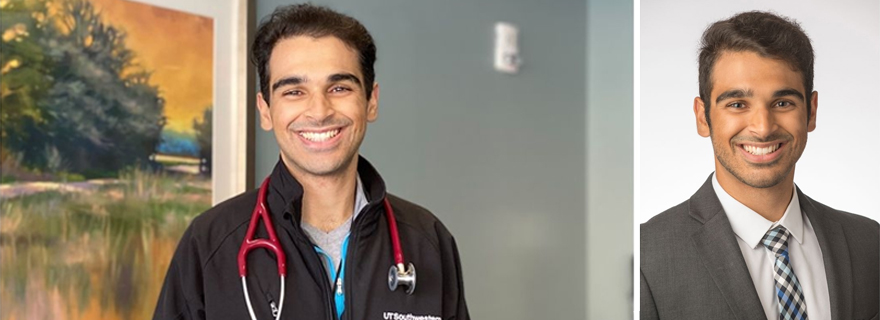Perspectives from the Frontlines of COVID-19: Learning From Our Patients

A Physician describes the difficult decisions that need to be made and how they impact care by Dr. Ali Tejani.
It would be an understatement to say that COVID-19 has changed the way we go about our daily lives. When swift adjustments were made to accommodate for social distancing, it seemed that we would be enacting these difficult measures temporarily until achieving a non-existent transmission rate. However, about six months after the first stay-at-home orders were instituted in the United States, we realize that our strategy ought to be one of sustained perseverance rather than sprinting to the finish line.
During this transition, I found myself (virtually) graduating from medical school and starting work on the internal medicine wards. Due to the abrupt nature of changes during this time, our cohort of physicians did not receive special training for COVID-19 management prior to joining the frontline.
Naturally, the normal excitement of beginning our medical careers was met with a multi-faceted apprehension. What should my suspicion be for COVID-19 in patients who walk through the emergency department (ED) doors? How do we determine whether patients are suffering from a primary illness due to COVID-19 or complications of infection? Is COVID-19 responsible for worsening comorbid conditions? How do we treat COVID-19 both theoretically and practically? How do we reassure our patients that they will be alright? What if we contract the virus and spread it to other patients or our loved ones? Is my fear of contracting COVID-19 affecting the quality of care that I provide to my patients? These questions ran amok through our minds, yet our work called for composure and confidence.
With time and experience, we adjusted to the “new-normal,” donning personal protective equipment (PPE) for every patient with COVID-19 in mind, while keeping an open mind to formulate an accurate, evidence-based differential diagnosis for our patients. Every new patient challenges our efforts to subdue an urge to succumb to availability bias. For starters, a recent outpour of literature has disrupted the calibration of what we understood as the symptoms and complications of COVID-19. Furthermore, many patients challenge our current paradigms of screening and management, requiring consistent reflection and revision of our approach to patient care.
As cases continue to increase, we can turn to lessons learned from each of these patients to inform responsible decisions in the continued conflict against COVID-19. Whether it be an emergency, such as a suicide attempt secondary to worsening depression due to a lack of social engagement during quarantine, or outpatient concern of weight-gain, and consequent arthritis, due to disrupted exercise while staying at home, every patient encounter has a story worth learning from to inform our future decisions.
A Woman Denied Care
Late into one of our admitting days, I evaluated a febrile patient with severe headaches. The nuances of this patient’s history, diagnosis, and treatment are beyond the scope of this article. However, under pre-COVID-19 circumstances, this patient would receive prompt evaluation for infection around her brain and spinal cord. Furthermore, sub-specialty consultants would assist our team with recommendations for medications that they think would best address our patient’s condition. Unfortunately, our patient fell into COVID-19 testing purgatory requiring mandatory separation in a quarantine unit until testing proves negative infection status. As a result, we were limited in the capacity of care that we could provide while adhering to protocol.
To make matters worse, the primary consulting sub-specialty informed us that they will not see our patient, and thus not provide recommendations, until she was cleared of possible COVID-19 infection. Though our patient was ultimately cleared and provided with appropriate care at that stage, we learned that healthcare workers are not immune to fears of contracting COVID-19. Unfortunately, these fears sometimes interfere with timely delivery of care – a theme that we are observing across specialties. The question remains of how to address these fears to avoid delays in evaluation, diagnostic procedures, and therapeutic interventions.
A Woman With Interim Metastasizing Cancer
Though fear of virus contraction exists in the general public, it may be intensified in patients with a lower threshold for infection, such as those with cancer or medications that quiet the immune system. We have seen patients present to us with florid cancer spreading far from the primary site of their tumor, despite having a relatively-well controlled disease burden as recently as the end of the prior year. What happened in the interim? One patient tells us that she stopped attending chemotherapy sessions and follow-up appointments with her oncologist due to fears of catching the virus and perishing from complications. However, with interim worsening prognosis due to amplification of her underlying malignancy, she laments missing the opportunity to continue therapeutic measures that could have saved her life.
This person’s situation is not unique, as patients often present with complications from comorbid conditions, such as heart failure exacerbations, due to a significant disruption in their ability to attend scheduled appointments and obtain medication refills. How could we, the greater medical community, have prevented this woman’s presentation? Telemedicine may prove to be our savior in the short-term, offering a socially-distant alternative to in-person appointments; however, there are numerous situations where in-person visits are warranted for appropriate care. Regular communication between practices and their patients to reassure them of evidence-based communicable disease measures will be vital to ushering patients to continue care for their chronic conditions to avoid complications.
A Patient Without Fever
Some patients alter our tentative paradigms in the approach to diagnosing and treating COVID-19. One lesson that we are learning the hard way is heterogeneity in the presentation of the virus. As cases increase, and slowly outpace our capacity to test every single patient who presents to the ED, the risk of missing a carrier patient who can spread the infection unknowingly to others drastically increases.
In the peak of summer, our team admitted a patient to treat him for an alarmingly high blood pressure causing fluid to accumulate in his lungs. Though we addressed the patient’s elevated pressures and complications, with an initial improvement in his clinical state, our patient demonstrated worsening ability to breathe. Incidentally, as part of a routine pre-procedural COVID-19 test, we found that he was an asymptomatic carrier of the virus who had not been screened in the ED. Our team was in disbelief, and we were pressed to assess the extent of possible spread of the infection to inadequately-protected family members or hospital staff while optimizing our current patient’s care.
How do we prevent this situation going forwards? Do we resume testing for every patient that walks through the ED doors? At this point, we have all likely been screened for fever with a questionnaire of symptoms prior to entering a public facility, but can these markers serve as sensitive indicators of infection with COVID-19? Is it safe to let our guard down if those around us do not have symptoms, including fever?
Final Thoughts
These are just a few cases from the many that we encounter on a daily basis. As many clinical decisions in medicine, there is no definitive answer. Instead, we must respond by considering new evidence to critically appraise measures adopted by our field and presented to the community as new paradigms in care. If there is anything that COVID-19 forces us to understand, it is that medicine is a constantly evolving field that requires flexibility and humility from those who endeavor to optimize patient care. Our species has overcome analogous challenges in the past, and we can find similar success by practicing the resilience and respect for evidence-based measures that helped our ancestors.




